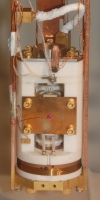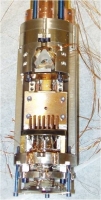Correlated Electrons at the Nanoscale
The Hoffman laboratory uses high resolution scanning probe techniques to understand and control the electronic and magnetic properties of exotic materials. In conventional metals, electrons barely interact with each other: Fermi liquid theory describes their tendency to screen local charge, so electrons can be treated as isolated quasiparticles with well-defined momentum. In contrast, the common feature in materials such as cuprate high-Tc superconductors, vanadates, and heavy fermion materials is that screening is incomplete, electrons do interact, and we lack broadly successful theoretical language to describe these ‘correlated electron materials’.
Scanning tunneling microscopy was conceived as a powerful tool for real-space imaging of electron states with atomic resolution. Members of the Hoffman Lab have developed new analysis techniques by which STM can achieve picoscale resolution in real space, and can also probe the momentum-space structure of the electrons via quasiparticle interference imaging. This simultaneous real-space and momentum-space information is a crucial advance towards understanding correlated electron systems which display both nanoscale spatial inhomogeneity and well-resolved quasiparticle momentum states.
Many of today's forefront materials are not only electronically, but also chemically inhomogeneous at the nanoscale. High-Tc superconductors, doped semiconductors, and colossal magnetoresistance materials are just a few examples in which desirable electronic properties may arise from chemical inhomogeneity. However, in materials such as graphene or topological insulators, atomic impurities may interrupt the predicted exotic properties. To fully understand and harness these materials, and to drive the discovery of new materials, it is crucial to understand the effects of single atoms. The challenge is that electronic signatures of these chemical inhomogeneities often exist at energies outside the available range of STM spectroscopy. The Hoffman lab has recently developed new techniques to extend the spectroscopic energy range on the fragile surfaces of quasi-two-dimensional materials, which has enabled us to understand for the first time the role of single oxygen atoms in the mysterious ‘pseudogap’ phase of a cuprate high-Tc superconductor.
In addition to passive imaging, the Hoffman Lab is working on several techniques to actively manipulate exotic phases of materials at the nanoscale. For example, we have locally induced the metal-insulator transition in VO2, and we have controllably repositioned individual magnetic vortices in the iron-pnictide high-Tc superconductor NdFeAsO1-xFx.
Materials
NbSe2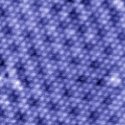
|
Ba(Fe1-xCox)2As2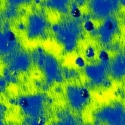
|
NdFeAsO1-xFx
|
PrxCa1-xFe2As2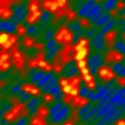
|
Bi2Sr2CuO6+x
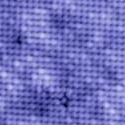
|
Bi2Se3
|
Bi2Sr2CaCu2O8+x

|
Sb(111)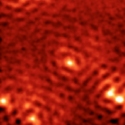
|
VO2
|
Nd2Fe14B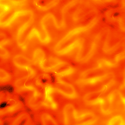
|
SmB6
|
KxSr1-xFe2As2
|
Li0.9Mo6O17
|
La2SrMn2O7
|
Ca-YBa2Cu3O7-x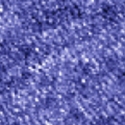
|
Microscopes
|
These microscopes are housed in a low-vibration laboratory designed by Wilson
Architects. |
